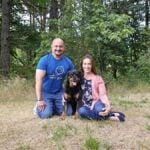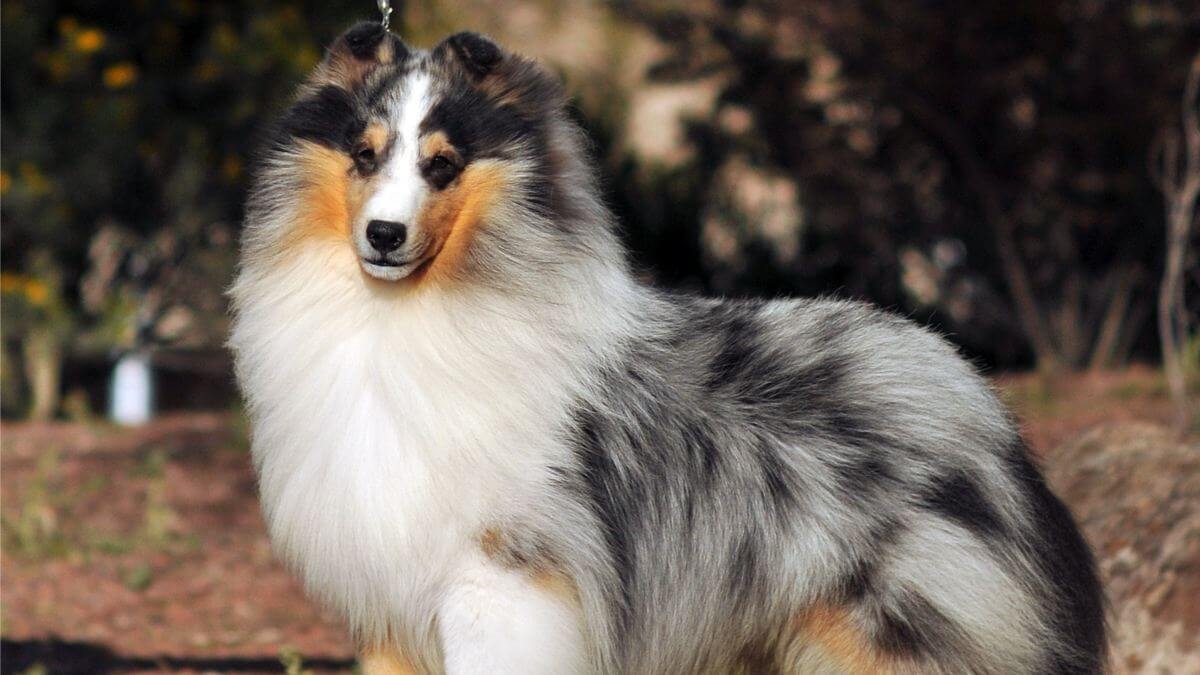


Home » The Numeric Standard: Shetland Sheepdogs

This article was originally published in Showsight Magazine, July 2015 issue.
Judges often remark that the Shetland Sheepdog (Sheltie) can be a difficult breed to judge, and breeders report it is difficult to breed good quality. Attend an American Shetland Sheepdog Association (ASSA) national, and one will find various breed types, grooming styles, presentation styles, and as many opinions as there are participants. While such a large event can be enough to make one’s head spin, the Sheltie is fortunate to have a well-written standard.
The written standard concludes with the scale of points (see Table 1), which sums up the Sheltie numerically and guides judges and breeders alike as to which virtues should carry the most weight. Early editions of Sheltie Talk, by Betty Jo McKinney, provided Sheltie enthusiasts with a form based on the scale of points to evaluate individuals. The idea of using this scale has gained renewed interest and has been used for the first two years of the new ASSA Top Twenty competition.
There is no substitute for reading a Breed Standard in its entirety and learning all one can about why it came to be written as it was. However, finding creative ways to dissect and learn can broaden one’s understanding or at least lead to additional discussions.
In my attempt to understand and follow the scale of points more closely, I have rearranged the written standard to pair together the parts that are paired in the scale. No words have been changed from the text of the standard, but parts of the standard may be missing because they were not mentioned in the scale of points. This exercise is simply an additional way to focus and think about the Sheltie.
It’s interesting to note where the highest points are given and how the total dog was evaluated. The larger categories of General Appearance (25 pts), Head (20 pts), Body (20 pts), Forequarters (15 pts), Hindquarters (15 pts), and Gait (5 pts) have been further broken down. In some areas, such as under General Appearance, nothing has been “lumped together.” For example, temperament has been weighted with a full 10 points, while under Hindquarters, structural components like hocks and feet have been “lumped” together and combined for 5 points.
Continuing with Hindquarters as an example, one may not be accustomed to evaluating the hindquarters only in terms of the hip, thigh, and stifle, not the croup or tail (which are included under Body). While fully diving into this evaluation, one may be surprised by what is important, what is listed as a “fault,” what is not listed as a “fault,” and what we’ve placed emphasis on over time.
Hopefully, judges and breeders have the same goal: the evaluation of breeding stock. For judges, this exercise may help organize the picture the Sheltie standard is painting. For breeders who feel they have a picture of the perfect Sheltie in mind, this exercise can help move beyond superficial faults and virtues and gain a deeper understanding of what a dog offers to a breeding program.
As judges and breeders work together to improve the breed, it’s helpful to know which areas a breed excels in and which areas need improvement. All methods of evaluation that use the written standard can deepen one’s understanding.
Symmetry
The outline should be so symmetrical that no part appears out of proportion to the whole.
Temperament
The Shetland Sheepdog is intensely loyal, affectionate, and responsive to his owner. He may be reserved toward strangers but not to the point of showing fear or cringing in the ring. Faults—shyness, timidity, or nervousness, stubbornness, snappiness, or ill temper.
Coat
The coat should be double, with the outer coat consisting of long, straight, harsh hair. The undercoat should be short, furry, and dense, giving the coat its “stand-off” quality. The hair on the face, tips of ears, and feet should be smooth. The mane and frill should be abundant, particularly in males. The forelegs should be well-feathered, and the hind legs heavily so, but smooth below the hock joint. The hair on the tail should be profuse. Faults—Coat short or flat in whole or in part; wavy, curly, soft, or silky. Lack of undercoat. Smooth-coated specimens.
Skull and Stop
The head should be refined, with a shape that tapers slightly from ears to nose, forming a long, blunt wedge. The top of the skull should be flat, showing no prominence at the nuchal crest. Cheeks should be flat. The skull and muzzle should be of equal length, with the balance point at the inner corner of the eye. The top line of the skull should parallel the top line of the muzzle, but at a higher plane due to a slight but definite stop. Faults—Two-angled head. Too prominent a stop, or no stop. Overfill below, between, or above the eyes. Prominent nuchal crest. Domed skull. Prominent cheekbones.
Muzzle
The cheeks should be flat and merge smoothly into a well-rounded muzzle. Jaws should be clean and powerful. The deep, well-developed underjaw, rounded at the chin, should extend to the base of the nostril. The nose must be black, and the lips should be tight. Upper and lower lips must meet and fit smoothly together all the way around. Teeth should be level and evenly spaced. Faults—Snipy muzzle, short, receding, or shallow underjaw. Overshot or undershot, missing or crooked teeth. Teeth visible when the mouth is closed.
Eyes, Ears, and Expression
Eyes should be medium-sized, dark, almond-shaped, and set somewhat obliquely in the skull. The color must be dark, with blue or merle eyes permissible only in blue merles. Faults—Light, round, large, or too small eyes. Prominent haws. Ears should be small, flexible, set high, and carried three-fourths erect, with tips breaking forward. When at rest, the ears should fold lengthwise and be thrown back into the frill. Faults—Ears set too low. Hound, prick, bat, or twisted ears. Leather too thick or thin. Expression—The contours and chiseling of the head, the shape, set, and use of the ears, and the eyes’ placement, shape, and color combine to produce expression. Normally, the expression should be alert, gentle, intelligent, and questioning.
Neck and Back
The neck should be muscular, arched, and long enough to carry the head proudly. Faults—Too short and thick. The back should be level and strongly muscled. Faults—Back too long, too short, swayed, or roached.
Lion, Croup, and Tail
The lion should have a slight arch, and the croup should slope gradually to the rear. The hipbone (pelvis) should be set at a 30-degree angle to the spine. Faults—Croup higher than the withers. Croup too straight or too steep. The tail should be long enough that when laid along the back edge of the hind legs, the last vertebra reaches the hock joint. The tail’s carriage at rest should be straight down or in a slight upward curve. Faults—Too short, twisted at the end.
Shoulder
From the withers, the shoulder blades should slope at a 45-degree angle forward and downward to the shoulder joints. At the withers they are separated only by the vertebra, but they must slope outward sufficiently to accommodate the desired spring of rib. The upper arm should join the shoulder blade at as nearly as possible a right angle. Elbow joint should be equidistant from the ground or from the withers. Faults—Insufficient angulation between shoulder and upper arm. Upper arm too short. Lack of outward slope of shoulders. Loose shoulders. Turning in or out of elbows.
Forelegs and Feet
Forelegs straight viewed from all angles, muscular and clean and of strong bone. Pasterns very strong, sinewy and flexible. Faults—Crooked legs. Light bone. Feet should be oval and compact with the toes well arched and fitting tightly together. Pads deep and tough, nails hard and strong. Faults—Feet turning in or out. Splay feet. Hare feet. Cat feet.
Hip, Thigh and Stifle
The thigh should be broad and muscular. The thighbone should be set into the pelvis at the right angle corresponding to the angle of the shoulder blade and upper arm. Stifle bones join the thighbone and should be distinctly angled at the stifle joint. The overall length of the stifle should at least equal the length of the thighbone and preferably should slightly exceed it. Faults—Narrow thighs.
Hocks and Feet
Hock joint should be clean-cut, angular, sinewy, with good bone and strong ligamentation. The hock (metatarsus) should be short and straight viewed from all angles. Faults—Cow-hocks. Hocks turning out. Poorly defined hock joint. Feet should be oval and compact with the toes well arched and fitting tightly together. Pads deep and tough, nails hard and strong. Faults—Feet turning in or out. Splay feet. Hare feet. Cat feet.
Gait—smoothness and lack of waste motion when trotting. The trotting gait of the Shetland Sheepdog should denote effortless speed and smoothness. There should be no jerkiness, nor stiff, stilted, up-and-down movement. The drive should be from the rear, true and straight, dependent upon correct angulation, musculation, and ligamentation of the entire hindquarter, thus allowing the dog to reach well under his body with his hind foot and propel himself forward.
Reach of stride of the foreleg is dependent upon correct width of chest and construction of rib cage. The foot should be lifted only enough to clear the ground as the leg swings forward. Viewed from the front, both forelegs and hindlegs should move forward almost perpendicular to ground at the walk, slanting a little inward at a slow trot, until at a swift trot the feet are brought so far inward toward center line of body that the tracks left show two parallel lines of footprints actually touching a center line at their inner edges. There should be no crossing of feet nor throwing the weight from side to side.
Faults—Stiff, short steps, with a choppy, jerky movement. Mincing steps, with a hopping up and down, or a balancing of weight from side to side (often erroneously admired as a “dancing gait” but permissible in young puppies). Lifting of front feet in hackney-like action, resulting in loss of speed and energy. Pacing gait.